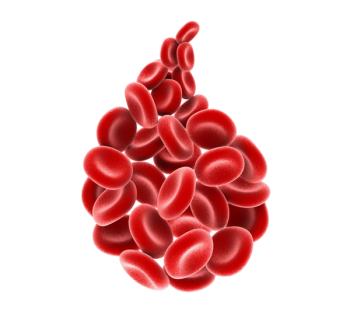
Mobocertinib Leads to Meaningful Benefit for EGFR ex20ins+ NSCLC After Prior Disease Control With EGFR TKIs
A recent trial found that patients with EGFR exon 20 insertion–mutant metastatic non–small cell lung cancer with prior disease control on standard EGFR inhibitors demonstrated efficacy and tolerability of mobocertinib.
Mobocertinib (previously TAK-788) led to positive antitumor activity in patients with EGFR exon 20 insertion–positive metastatic non–small cell lung cancer (NSCLC) who had achieved disease control on prior EGFR inhibitor therapy, according to a presentation from the
The overall response rate (ORR) per independent review committee (IRC) assessment was 40% (95% CI, 19.1%-63.9%) with a duration of response (DOR) of 13.0 months (95% CI, 5.6-13.5). In this phase 1/2 trial (NCT02716116), the safety profile was consistent with the known effects of mobocertinib and with the broader class of EGFR tyrosine kinase inhibitors (TKIs).
“The overall response rate in previously treated patients receiving first-, second-, or third-generation EGFR TKIs is less than 10%, with a median PFS [progression-free survival] of less than 4 months,” Alexander Spira, MD, PhD from Virginia Cancer Specialists and US Oncology Research, said during a presentation.
There were 20 patients enrolled to this cohort of the phase 2 expansion portion of the trial, with a median age of 61 years (range, 38-78) and the majority (55%) being women. About half (55%; n = 11) were never smokers and had brain metastases at baseline (50%; n = 10). Prior therapies included platinum-based chemotherapy in 80% and immunotherapy in 65%, and all patients received at least 1 prior EGFR TKI.
All patients had prior TKI therapy, with the median time on therapy being 7.8 months (range, 4.0-37.6). Of note, 11 patients (55%) had received EGFR TKI therapy as their most recent prior treatment, with 7 patients receiving poziotinib (NOV120101), 3 receiving osimertinib (Tagrisso), and 1 on an investigation TKI.
At the median follow-up of 14.2 months (range, 5.2-21.1), the investigator-assessed ORR per RECIST 1.1 was 20% (95% CI, 5.7%-43.7%).
The disease control rate (DCR) by IRC was 90% (95% CI, 68.3%-98.8%) and the confirmed DCR per investigator analysis was 90% (95% CI, 68.3%-98.8%).
The median progression-free survival was 7.3 months (95% CI, 3.6-13.0) and the median overall survival was not reached (14.7-not reached). The rate of OS at 6 months was 94.7% and 78.6% at 12 months.
From baseline, all but 1 patient (95%) had a reduction in target lesion diameter. This was specifically seen in patients with the FQEA mutations, the investigators noted.
There were 10 patients (50%) who experienced treatment-emergent adverse effects (AEs) greater than grade 3, while 4 (20%) experienced any-grade treatment-related AEs (TRAEs). There were 7 patients (35%) who had serious AEs, 4 (20%) with AEs leading to dose reductions, and 2 (10%) leading to discontinued treatment.
Overall, 90% of patients had any-grade diarrhea that was treatment related, but only 1 was grade 3 or higher. Additional TRAEs included nausea (35%), pruritis (30%), and rash (20%).
“Mobocertinib treatment provided a clinically meaningful benefit for patients with EGFR exon 20 insertions and metastatic NSCLC who had greater than 6-month disease control or response to prior EGFR TKIs,” Spira concluded.
Reference
Spira A, Ramalingam SS, Neal J, et al. Mobocertiniv in EGFR exon 20 insertion-positive metastatic NSCLC patients with diseasr control on prior EGFR TKI therapy. Presented at: 2021 World Conference on Lung Cancer; September 8-14, 2021. Virtual. Abstract OA15.01.
Newsletter
Stay up to date on recent advances in the multidisciplinary approach to cancer.




















































































